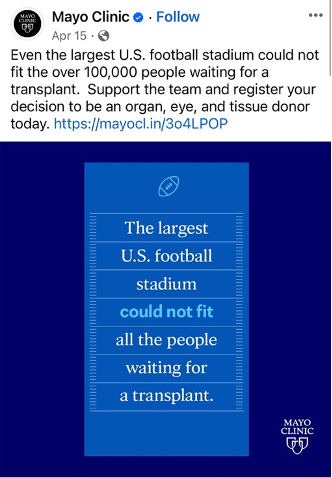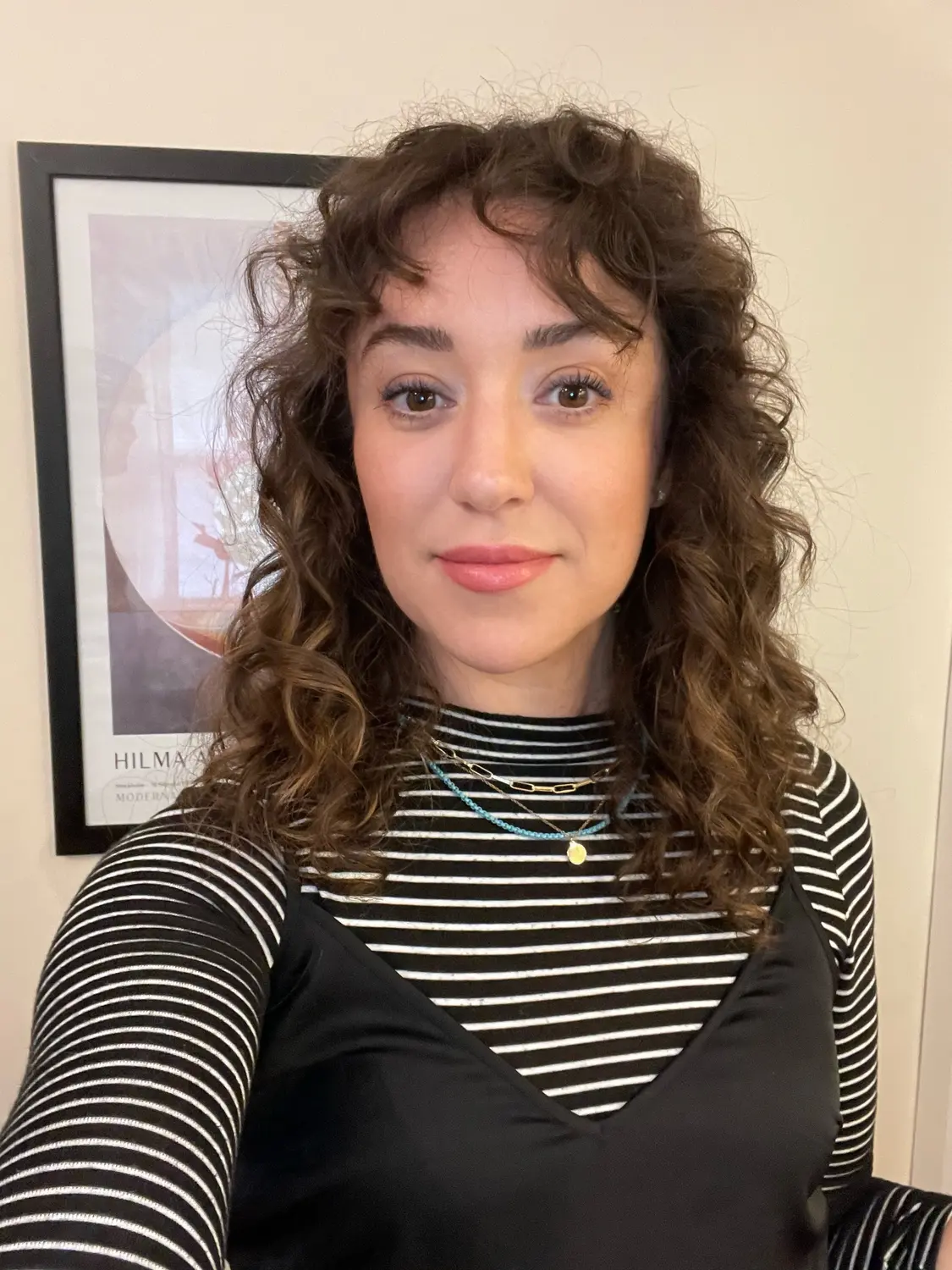News & Insights
News & Insights
BY Kara Foxx
When you think about the average health brand’s social media presence, a familiar picture may pop into your head: The dedicated nurse or doctor, in uniform and professionally posed, smiling right back at you. Often, this photo is paired with a caption that requires a little too much reading to grasp the purpose for the post—clinical jargon, anyone?
The truth is many health brands’ social accounts feature this familiar setup — they’re indistinguishable from each other. But a health brand’s social presence doesn’t have to be boring or strictly educational.
Posting people stories isn’t necessarily a bad thing. Sure, showing your incredible care team on social is essential. But there’s more than one way to do it. It’s time to move health brands’ social channels beyond a clichéd approach. In fact, at BPD we believe they should be the most exciting things on the Internet. Think that’s too far? Read on.
Social media is where health happens
Consumers don’t navigate health like other industries—we all know that. The healthcare choices they make are far more intricate than ordering their dinner on Uber Eats. Decisions are deeply personal and emotional—impacting health, well-being and sometimes, length of life.
Social media plays a major role in how a healthcare consumer will approach these big decisions: It’s where many find their health information, form opinions (whether consciously or unconsciously), and make choices. It’s where they ask their friends for doctor recommendations, share personal stories, and join closed social groups to talk about symptoms. It’s where they lean into influencer recommendations about health, and click headlines filled with misinformation from their favorite news outlets. Yes, we’ve all been suckered into TikTok health trends like “lemon coffee for weight loss.”
Consumers turn to these sources because they take complex concepts (like weight loss) into easy-to-digest, entertaining content. Over time, that creates trust.
Give someone a choice to watch an Instagram Reel from their local hospital or their favorite influencer… it’s pretty obvious which they’ll pick. To stand out, health brands must not just stand out from other health brands—but amongst friends, influencers, news, and brands in general.
So—that cliché white coat photo isn’t going to stop someone from scrolling. So, what will? There is no one-size-fits-all answer, but we can start with some basic dos and don’ts. This guide will cover best practices and thought starters to move your social presence away from the overly promotional and into a rich, personable, and unique position. While it merely skims the surface of best practices, consider it a primer to get started.
Before you dive headfirst, an important reminder: knowing your audience is the Holy Grail. Once you’ve got that pinned down, use these tips to form a social approach that fosters genuine connection with the people you serve.
DO: Use social media like a swiss army knife.
People use social media as a search engine, a review tool, a shopping center, an education portal, and a source of entertainment. For brands, it can play across the entire marketing funnel—creating brand awareness and engagement, capturing interest from search, increasing revenue, and building loyalty. Long gone are the days when social could only do one thing… it’s a multifaceted business tool—and your executives need to see it that way.
Here are a few ways health brands can take advantage of all the different ways people use social media:
- Inform: Create informative content that answers the questions that people are asking on social media. Make sure you are giving your patient-facing staff a way to communicate common questions and concerns they hear from patients back to you, so you can ensure the content is relevant. But make the info fun—think TikToks, Reels, Stories, and more.
- People stories: Encourage patients and other stakeholders to share their stories and experiences on social media. We can’t expect people to take time out of their busy lives to review their experiences for everything, so think of ways to make the process as easy and pleasant as possible for them. This can help to build trust and credibility with potential patients.
- One-click experiences: Make it easy for people to book appointments or shop for healthcare products and services through social media. This can be done by integrating social media with your website or booking system.
DON’T: focus on follower count.
Follower count is a vanity metric, full stop. At the end of the day, the number of followers does not contribute to the bottom line or indicate the quality of interactions with your audience.
To measure the effectiveness of your social media marketing efforts, consider starting with these metrics instead:
- Engagement
- Reach (among your target audience)
- Share of voice
- Referrals and conversions
- Response rate and time
- Revenue growth
Here’s the real test for metrics. Can you hand your social media metrics to your CEO and have her/him/them eyeball them in 5 seconds and understand how social is driving the business? If not, rethink your measurement.
DO: Make your audience feel seen.
How do you keep followers engaged over a long period of time? By consistently providing them with useful content that educates, informs, and relates to their own world.
This “do” may seem obvious, but too often we fail to put ourselves in a consumer’s shoes and instead cater to what we as health brand marketers want to be talking about (Our new facilities, the awards we’ve won, our world-class care… etc etc.)
Many heath brand Facebook pages have massive follower counts, but their engagement rate is less-than-stellar. The reason? More than likely, it’s because they don’t understand their followers and they aren’t making content that makes them feel “seen.”
- How can you play up your audiences’ egos? People love to see their own lives reflected—that’s why memes are so successful.
- Will this post make our audience “feel seen” in some fashion? Will it make them feel an emotion?
- What is my organization’s unique perspective or expertise? What can we share that others can’t?
- How can we make our content more relatable? Can we share personal stories or anecdotes? Can we use humor or lightheartedness to make it more engaging?

A final tip for creating useful content: Always be authentic and transparent. People can spot a fake from a mile away, so be genuine and share your own unique perspective.
DON’T be pressured to show up on every platform.
Meta. X. TikTok. Discord. Reddit. Doximity… the list goes on. No, you do NOT need to be on every channel. Focus on the 2-3 channels that your audience lives on, and do those really well.
Enough said.
DO: Listen. REALLY listen.
Social listening is a fancy way to say—look out for what people are saying online and for what’s trending. It’s been around for over a decade, but few brands really listen.
Here are a few ways to get your ear to the ground:
- A provider could use social listening to identify the most common questions that people ask about a particular health condition—and then create FAQ content.
- A doctor could track what people are saying about a new medical treatment. The doctor could then create content that addresses any concerns that people may have about the treatment.
- A health brand could start a “news room” practice, where marketers gather for 15 minutes each morning to see what’s trending in social and then create timely, real-time content to get into that cultural zeitgeist.
DON’T post it and forget it.
The best conversations happen in the comment section. But that won’t happen if you’re not there leading the conversation.
DO: Recruit senior talent for the social role—and give them a real seat at the table.
If there’s one thing every modern marketing team should recognize, it’s this: Social media managers aren’t just “those folks who press post.” A good social manager’s expertise will run deep. Let’s unpack it.
- Social managers are on the front lines. They’re fielding the toughest questions about your organization—and they need the experience and wisdom to know when to respond on-the -fly and when to involve leadership.
They have to know a lot about a lot—Meta, TikTok, Reddit, Google. Content creation. Analytics. Paid media. Publishing guidelines. And SO much more.
- They are creating a “face” for your business. They need to be versed on business objectives, brand strategy, crisis communications, customer service, and more.
Don’t put social media managers in a corner. Give them an important seat at the marketing table. Give them access to leadership to ensure your social presence aligns with other initiatives at the organization. Make sure they have the resources and the voice they need to communicate with your clinical staff so they can better understand your patients and audience.
DON’T: Ignore misinformation.
Healthcare brands cannot ignore misinformation, even if it’s not happening on their page. Misinformation can have a negative impact on public health, and healthcare brands have a responsibility to help combat it.
When people believe misinformation about health, they may make bad decisions about their care. For example, they may delay or avoid necessary medical care, or they may use unproven treatments. When people see that healthcare brands are not doing anything to address misinformation, they may lose trust in those brands. This can make it difficult for healthcare brands to reach people with important health information.
Healthcare brands can help to combat misinformation by:
- Providing accurate and up-to-date information about health. Social media is an ideal place to broadcast the most up-to-date info in a timely fashion.
- Fact-checking misinformation. When healthcare brands see misinformation circulating online, they can fact-check it and share the correct information. They can also work with fact-checking organizations to help debunk misinformation.
DO: Pick the right agency partner.
Not every organization has the resources to have a full social team on staff. Social is not a one-person job… it requires strategy, research and insights, design, copy, paid media, channel management, influencer marketing, analytics, and customer service. To handle social media fully in-house is to dedicate a fairly large team.
When picking a social partner, here are some questions to ask:
- Do they understand the ins and outs of your industry?
- Are they including social media as a central part of every program they do?
- Do they have case studies that you admire?
- Can they turn social media into a business growth tool?
- Do they have the results to prove it?
Conclusion
Go forth and be social.
Your audience spends hours of their waking lives on social. It’s where health happens. So, it’s one of the most important spaces to get right as a marketer.
We challenge you to go beyond the expected—go beyond the shiny, happy, smiling faces of healthcare to create content that stops people in their scrolling tracks.
Want to dig in more? Need a partner to manage your brand channels? Shoot us a note at insights@bpdhealthcare.com.
Related Blog Posts
Stay in Touch
Stay in Touch
Receive our updates, industry news and insights.



